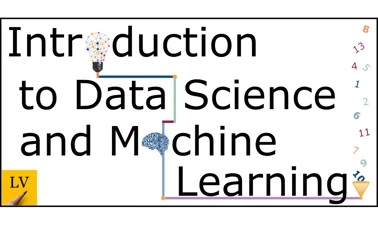70,00 €
A first introduction to data science and machine learning. Use Python to acquire, clean, and analyze data using powerful machine leanring models and popular data science libraries.
70,00 €
A first introduction to data science and machine learning. Use Python to acquire, clean, and analyze data using powerful machine leanring models and popular data science libraries.

This course will introduce you to the world of data science and cover all the major aspects of deriving insights from data sets. In this course, we will show you how to acquire data, clean it for easier analysis, explore and derive insights, convert it into specific features, and model it using machine learning algorithms.
Finally you’ll use insights and predictions from your models to make definitive statements about your data. This course will be presented almost entirely in Jupyter notebook form. Jupyter notebooks are one of the primary tools used by data scientists today. They integrate code data images, and interactive widgets in a seamless presentation format.
We also include interactive notebooks that test and exercise every aspect of the data science. Rather than start with a large amount of theory. This course takes a top down approach towards teaching. We first start with the complete worked example, showing you the full flow of a useful data analysis skill.
As we continue in the course, we’ll unpack that example, going deeper and deeper into each component until you understand exactly what each line of code in the example is doing. By the end of the course, you’ll be able to write the entire example from scratch on your own. We use this approach to give you a broad understanding about what each data science skill entails.
Wide Choice
Explore expert-led technical, leadership & personal growth courses.
Customized Learning
AI-powered recommendations so you follow what fits your goals.
Certifiable Skils
Earn recognized certificates to showcase your progress.
Practical Impact
Gain immediately usable knowledge you can apply at work or life.
Progress Tracking
Track your growth every course, see how far you’ve come.
Career & Personal Growth
Advance professionally while growing personally.
We combine wide course variety, AI-driven personalization, and practical content so you learn what matters, efficiently.
Yes, every completed course grants you a certificate to validate your achievements.
They range from beginner to advanced. No matter your level, there’s a fit to help you grow.
Our platform uses AI to analyze your progress and suggest courses tailored to your goals.
ClearTech provides progress tracking tools so you can monitor learning achievements as you complete courses.
Yes, once you enroll, you can access your courses online and start right away.